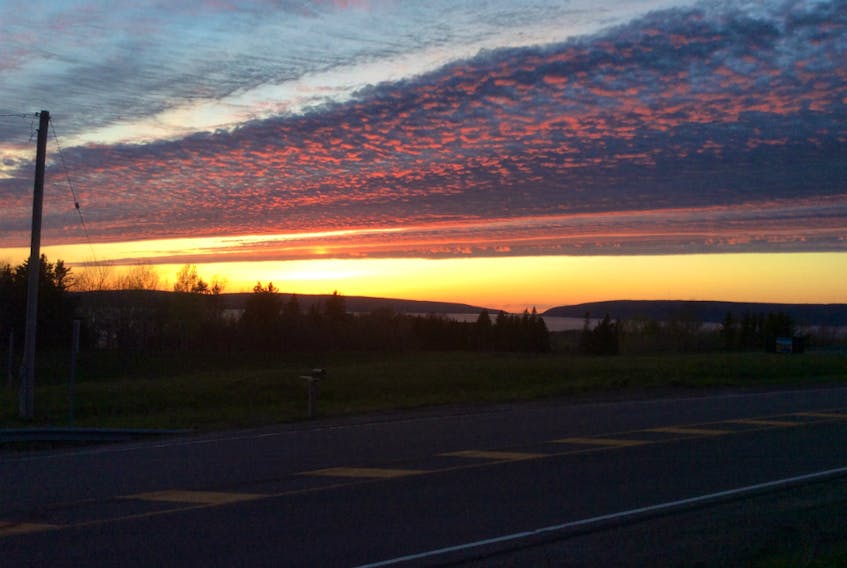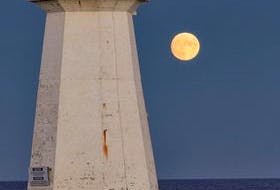When I moved from the farm to Atlantic Canada I was excited about the seafood; I could eat fish three times a day! It doesn’t get much better or fresher than right here. We are blessed.
One fish I was eager to get to know more about was the Atlantic mackerel. Grandma often referred to the “mackerel sky.” It a beautiful display of cirrocumulus or altocumulus clouds arranged in somewhat regular waves and showing blue sky in the gaps. The pattern looks like the scales on a mackerel! Now the same cloud formation has a different name in Germany and France; there they are known as “sheep clouds.” If you look at it that way, I guess the pattern can also look like a flock of sheep.
So back to Grandma and her reference to those clouds. “Mackerel sky, mackerel sky — never long wet, never long dry.” Well, believe it or not, there is some science behind this.
Small, white and fluffy cirrocumulus clouds typically consist of ice crystals and form between 6,000 and 10,000 metres above the ground. They often appear well ahead of an incoming weather system, usually a warm front. As the front gets closer, the clouds will thicken and the wind will veer from a northerly direction to a more southerly one. The typical width of an approaching warm front is about 500 km from the first hazy clouds to the onset of rain. If you see a mackerel sky, then you are about 400 km ahead of the rain. The typical moving speed of a system is about 50 km per hour. Consequently expect the weather to change within the next 6-8 hours.
Not long after I moved here I was sharing the story of Grandma’s mackerel sky with a new friend from the French shore. She informed me that there, the same cloud formation is called “nuages moutonneux”. Different names for the same pretty sky!
- Want more weather information? Visit WeatherByDay.ca
- Have a weather question, photo or drawing to share with Cindy Day? Email [email protected]
Cindy Day is the chief meteorologist for SaltWire Network.









